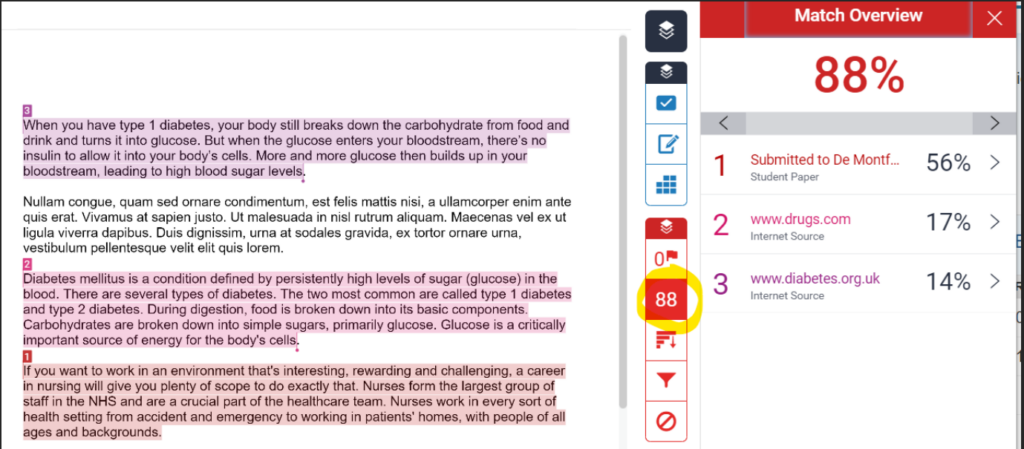Over the past few months, EdTech has shared concerns about A.I. classifiers, such as Turnitin’s A.I. detection tool, AI Text Classifier, GPTZero, and ZeroGPT. Both in-house testing and statements from Turnitin and OpenAI confirm that A.I. text classifiers unreliably differentiate between A.I. and human generated writing. Given that the tools are unreliable and easy to manipulate, EdTech discourages their use. Instead, we suggest using Turnitin’s Similarity Report to help identify A.I.-hallucinated and fabricated references.
What is Turnitin’s Similarity Report
The Turnitin Similarity Report quantifies how similar a submitted work is to other pieces of writing, including works on the Internet and those stored in Turnitin’s extensive database, highlighting sections that match existing sources. The similarity score represents the percentage of writing that is similar to other works.
AI Generated References
A.I. researchers call the tendency of A.I. to make stuff up a “hallucination.” A.I.-generated responses can appear convincing, but include irrelevant, nonsensical, or factually incorrect answers.
ChatGPT and other natural language processing programs do a poor job of referencing sources, and often fabricating plausible references. Because the references seem real, students often mistake them as legitimate.
Common reference or citation errors include:
- Failure to include a Digital Object Identifier (DOI) or incorrect DOI
- Misidentification of source information, such as journal or book title
- Incorrect publication dates
- Incorrect author information
Using Turnitin to Identify Hallucinated References
To use Turnitin to identify hallucinated or fabricated references, do not exclude quotes and bibliographic material from the Similarity Report. Quotes and bibliographic information will be flagged as matching or highly similar to source-based evidence. Fabricated quotes, references, and bibliographic information will have zero similarity because they will not match source-based evidence.
Quotes and bibliographic information with no similarity to existing works should be investigated to confirm that they are fabricated.
References
Athaluri S, Manthena S, Kesapragada V, et al. (2023). Exploring the boundaries of reality: Investigating the phenomenon of artificial intelligence hallucination in scientific writing through ChatGPT references. Cureus 15(4): e37432. doi:10.7759/cureus.37432
Metz, C. (2023, March 29). What makes A.I. chatbots go wrong? The curious case of the hallucinating software. New York Times. https://www.nytimes.com/2023/03/29/technology/ai-chatbots-hallucinations.html
Aligning language models to follow instructions. (2022, January 27). OpenAI. https://openai.com/research/instruction-following
Weise, K., and Metz, C. (2023, May 1). What A.I. chatbots hallucinate. New York Times. https://www.nytimes.com/2023/05/01/business/ai-chatbots-hallucination.html
Welborn, A. (2023, March 9). ChatGPT and fake citations. Duke University Libraries. https://blogs.library.duke.edu/blog/2023/03/09/chatgpt-and-fake-citations/


